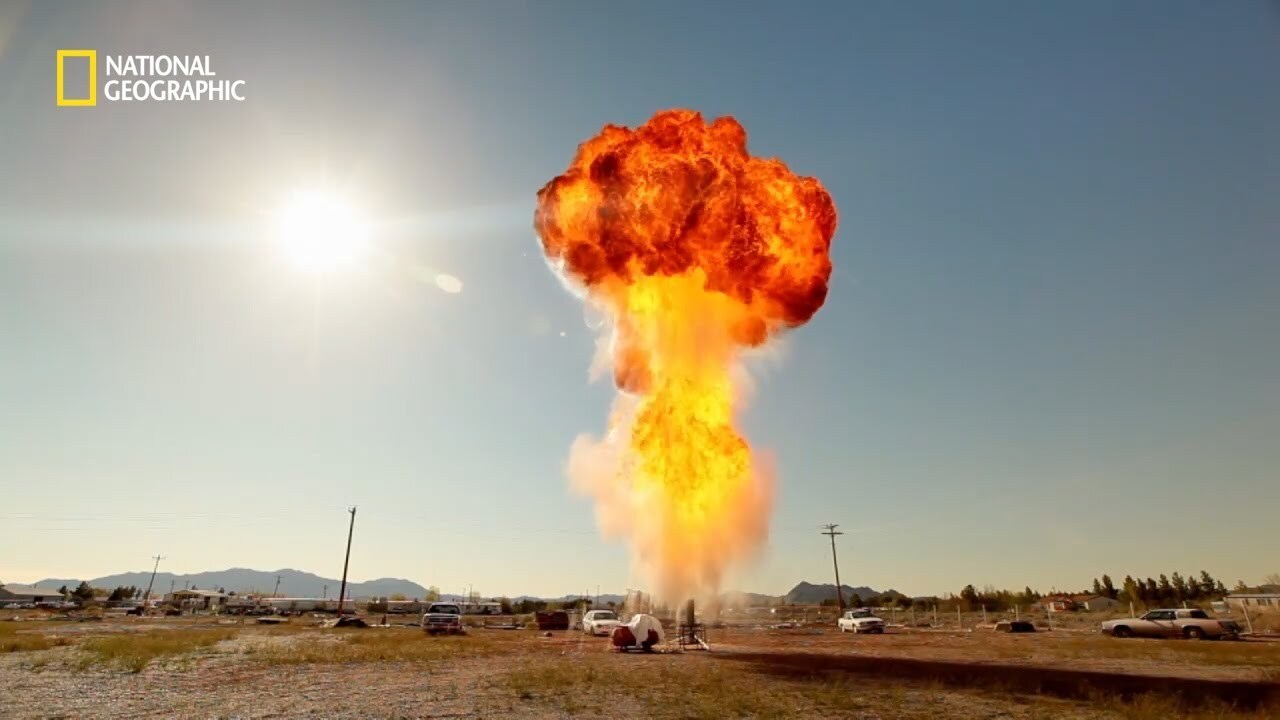
연소의 종류를 5가지 제시, 공통적인 안전대책은?
- 확산연소(기체), 예혼합연소(기체), 분무연소(액체), 증발연소(액체, 고체), 분해연소(고체), 자기연소(고체), 표면연소(고체)
1. 확산연소 (기체)
가연물이 공기와 혼합되어 연소가이루어지는 현상으로 물질의농도가높은곳에서낮은 곳으로 이동하기 때문에 가연물과 공기가서로 혼합되어 연소되는 것이다.
- 증발연소, 분해연소, 표면연소가확산연소의 형태로 연소된다.
안전대책 : 1)가연물의 선소공급원과의 접촉을 차단, 2)가연성 혼합기 형성의차단(불활성 가스주입, 3)연소 하한계와 상한계 활용)
2. 예혼합연소 (기체)
기체 가연물이 공기(산소)와 미리 혼합된 가연성 혼합기를 형성한 성태에서 연소하는 현상이다.
- 전일차공기식 연소기, 내연기관 등이 이러한 연소를 한다.
안전대책 : 1)액화에 의해 화재 확산과 폭발이 일어나지 않도록 주의해야 한다. 2)예혼합된 가연성 혼합기의 가스에 대해 누출 여부를 정기적으로 확인한다. 3)연소기 전단에 차단밸브를 설치하여 누출, 역화 시 차단이 가능하도록 해야 한다.
3. 분무연소 (액체)
액체 연료를 미세한 입자로 분무함으로써 공기와 혼합되어 가연성 혼합기를 형성함으로써 연소하는 현상이다.
- 경유, 휘발유의 내연기관 등이 이러한 형태의 연소를 한다.
안전대책 : 1)적정 운전온도, 압력에 대하여 상시 확인 되어야 한다. 2)연소폭발을 이용한 연소장치의 경우폭발 압력 또는 연료 누출로 인한 화재 확산, 연소기 외부폭발 등이 일어나지 않도록 기계의 결함, 연료 누출 등을 상시 확인하여야 한다.
4. 증발연소 (액체, 고체)
액체가 증발하며 공기와 환합되어가연성 혼합기를 형성하여 연소하는 현상이다.
- 파라핀, 등유, 경유, 휘발유 등의 인화성 액체의연소가 이에 속한다.
안전대책 : 1)포소확설비를 사용하여 표면에서의 화염적촉을차단하고, 냉각하여 소화한다. 2)액체가 증발되어 가연성 혼합기를 이루지 않도록 열과의 접촉을 차단한다.
5. 분해연소 (고체)
고체의 표면에서 열에 의해 물질이분해되며 가연성 증기를 발생시키고 이러한 가연성 증기가 공기와 혼합되어 가연성 혼합기를 형성함으로써 연소가 일어나는 현상이다.
- 나무, 석탄 등이 분해연소를 한다.
안전대책 : 1)고체가 열분해되지 않도록 열과의 접촉을 차단한다. 2) 분해가스의 화염과의 접촉을 차단한다. 3)작은 충격에도 분해되어가연성 증기를 발생시키는 물질의 경우 취급에 주의한다.
6. 자기연소 (고체)
물질이 내부에 산소를 포함하고 있어 외부에너지의 공급에 의해 외부의 산소공급 없이도 연소가 발생하는 현상이다.
- 니트로 화합물, 아조화합물 등의 자기 반응성 물질이 이에 속한다.
안전대책 : 1)열, 충격 등에 주의하여 반응에 필요한 에너지가 공급되지 않도록 한다. 2) 자기연소가 일어날 경우를 대비하여 주변의 연소물질과 이격하여 관리한다.
7. 표면연소 (고체)
물체의 표면에서 분자가 적열되며 산화반응을 하는 것으로 불꽃이 없는 연소이다.
- 코크스, 분상의 금속 등이 이러한 연소를 하며, 고체상태에서 연소한다.
안전대책 : 1)화재 시 다량의 물로 표면의 화심이 소화되도록 해야 한다. 2)재발화의유려가 있으므로 재발화 여부를 꼭 확인하여야 한다.
'화공안전기술사' 카테고리의 다른 글
| [연소,화재,폭발] 폭발한계에 미치는 환경적인 효과 (0) | 2019.03.18 |
|---|---|
| 석유화학공장에서의 화재 폭발사고 유형 (0) | 2016.09.30 |
| Forth Over Slop Over Boil Over 차이점 (0) | 2016.09.27 |



